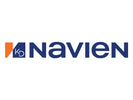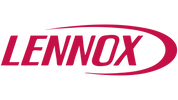- No products in the cart.
Enhancing Indoor Air Quality: A Guide to HVAC Upgrades
12
Mar
Introduction: Indoor air quality (IAQ) plays a vital role in maintaining a healthy and comfortable living or working environment. Poor IAQ can lead to various health issues such as allergies, respiratory problems, and discomfort. Fortunately, HVAC (Heating, Ventilation, and Air Conditioning) systems can significantly impact indoor air quality, and upgrading them can lead to substantial improvements. In this article, we'll explore effective strategies for enhancing indoor air quality through HVAC upgrades.
-
Upgrade to High-Efficiency Air Filters: One of the simplest yet most effective ways to improve IAQ is by upgrading to high-efficiency air filters. HEPA (High-Efficiency Particulate Air) filters can capture a wide range of airborne particles, including dust, pollen, mold spores, and pet dander, thereby reducing indoor air pollutants. Regularly replacing filters is essential to ensure optimal performance.
-
Install UV Air Purifiers: UV (Ultraviolet) air purifiers utilize ultraviolet light to neutralize airborne pathogens such as bacteria, viruses, and mold spores. Installing UV air purifiers within the HVAC system can help eliminate harmful microorganisms, thus improving IAQ and reducing the risk of respiratory infections.
-
Implement Whole-House Ventilation: Proper ventilation is crucial for diluting indoor air pollutants and maintaining fresh air circulation. Consider upgrading to a whole-house ventilation system that integrates with the HVAC system to bring in outdoor air while simultaneously exhausting stale indoor air. This helps prevent the buildup of indoor pollutants and maintains a healthy indoor environment.
-
Invest in Energy Recovery Ventilators (ERVs) or Heat Recovery Ventilators (HRVs): ERVs and HRVs are advanced ventilation systems that recover heat or energy from outgoing air and transfer it to incoming fresh air. By pre-conditioning incoming outdoor air, these systems improve energy efficiency while ensuring adequate ventilation and IAQ. They are particularly beneficial in climates with extreme temperatures.
-
Upgrade to Energy-Efficient HVAC Systems: Older HVAC systems may lack energy efficiency and proper air filtration capabilities, leading to poor IAQ. Upgrading to newer, energy-efficient HVAC systems not only reduces energy consumption and utility bills but also incorporates advanced filtration technologies and features that enhance IAQ.
-
Consider Duct Cleaning and Sealing: Over time, ductwork can accumulate dust, debris, and mold, which can compromise IAQ and HVAC system efficiency. Professional duct cleaning and sealing services help remove contaminants and prevent air leaks, ensuring that conditioned air reaches its destination without picking up pollutants along the way.
-
Schedule Regular Maintenance: Regular maintenance is essential for optimizing HVAC performance and IAQ. Schedule annual HVAC inspections and tune-ups to identify and address any issues promptly. This includes cleaning coils, checking refrigerant levels, calibrating thermostats, and ensuring proper airflow and ventilation.
Conclusion: Improving indoor air quality through HVAC upgrades is a proactive approach to creating a healthier and more comfortable indoor environment. By implementing strategies such as upgrading air filters, installing UV air purifiers, implementing whole-house ventilation, investing in ERVs or HRVs, upgrading to energy-efficient HVAC systems, considering duct cleaning and sealing, and scheduling regular maintenance, homeowners and building occupants can breathe easier and enjoy better IAQ. Investing in these upgrades not only enhances health and well-being but also contributes to energy savings and environmental sustainability in the long run.













